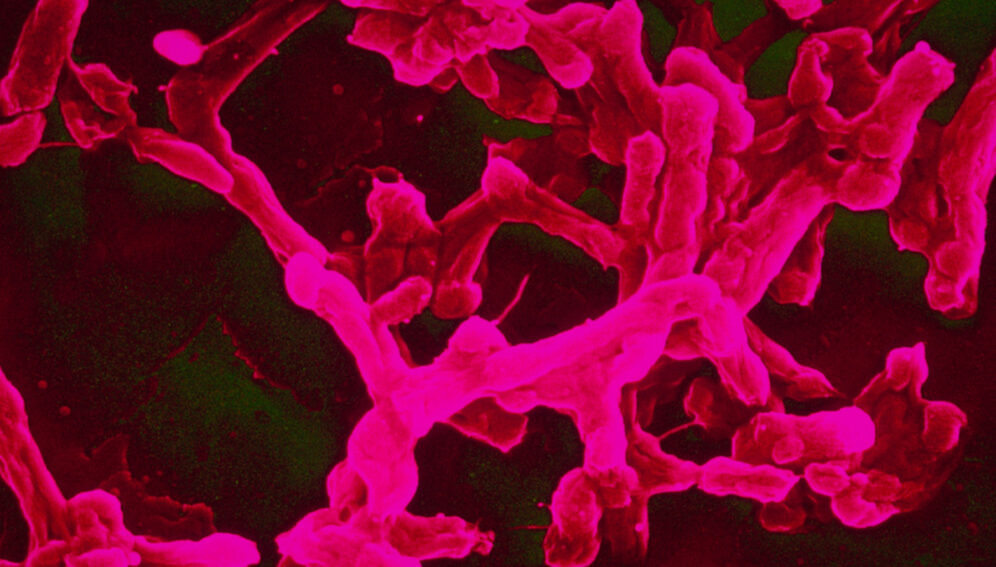29/06/22
‘Global response’ needed as typhoid evades antibiotics

By: Dann Okoth
Send to a friend
The details you provide on this page will not be used to send unsolicited email, and will not be sold to a 3rd party. See privacy policy.
The bacteria that causes typhoid fever is becoming increasingly resistant to common antibiotics used to treat the disease, with these resistant strains spreading to hundreds of countries in the past three decades, new analysis shows.
Typhoid fever is a life-threatening infection caused by the bacterium Salmonella Typhi (S.Typhi). It affects between 11 and 20 million people each year, leading to 128,000 to 161,000 deaths, according the World Health Organization (WHO).
The study published in The Lancet Microbe shows how resistant strains originally from South Asia, where the disease burden is highest, have spread to other countries almost 200 times since 1990.
Lead author Jason Andrews, an infectious disease specialist from Stanford University, US, told SciDev.Net: “The repeated acquisition of antimicrobial resistance among S.Typhi and spread across borders is concerning. We have very few antibiotics left that are effective against typhoid.”
The international team of researchers, funded by the Bill & Melinda Gates Foundation, say their findings highlight the need to treat drug-resistant typhoid as a global problem.
“The repeated acquisition of antimicrobial resistance among S.Typhi and spread across borders is concerning. We have very few antibiotics left that are effective against typhoid.”
Jason Andrews, associate professor of infectious disease, Stanford University
To isolate the drug-resistant typhoid strains, the researchers performed genome sequencing on 3,489 S.Typhi candidates obtained from blood samples collected between 2014 and 2019 from people in Bangladesh, India, Nepal and Pakistan with confirmed cases of typhoid fever. For comparison, they sequenced another 4,169 S.Typhi samples collected from 70 countries between 1905 and 2018.
The researchers say it is the largest ever examination of the S.Typhi bacterium.
Using genetic analysis techniques, they were able to show that all of the 7,658 strains studied were resistant to typical frontline antibiotics like ampicillin, chloramphenicol, and trimethoprim/sulfamethoxazole.
The findings show that resistant S. Typhi strains have spread between countries at least 197 times since 1990, with strains that often occurred in South Asia and South-East Asia, East and Southern Africa spreading to countries including the United States, the UK and Canada.
The highly contagious disease usually spreads via contaminated water and food or person-to-person contact, in areas with poor sanitation.
Multidrug-resistant typhoid
Multidrug-resistant (MDR) typhoid is being seen in Pakistan, while typhoid resistant to the widely used antibiotic azithromycin has been found in Bangladesh, Nepal and India, Andrews said.
“If MDR strains acquire azithromycin resistance, we will have no effective oral antibiotics left for treating typhoid,” he added.
Researchers also compared strains showing resistance to macrolides and quinolones, which are considered the most critically important human antibiotics.
Typhoid strains resistant to quinolones – a class of antibiotics that act against a wide range of disease-causing bacteria – have risen and spread at least 94 times since 1990, with most (97 per cent) originating from South Asia, according to the study.
It says strains resistant to quinolones accounted for more than 85 per cent of S.Typhi in Bangladesh by the early 2000s, rising to more than 95 per cent in India, Pakistan and Nepal by 2010.
Quinolones became the mainstay of treatment for suspected typhoid cases in the 1990s since they were highly effective against the disease, says Andrews.
Mutations causing resistance to azithromycin have emerged seven times in the past 20 years according to the study, with such strains being resistant to third-generation cephalosporin, another class of antibiotics critically important to human health.
“A concerning finding of our study is that resistant strains frequently spread and outcompete more sensitive strains [strains more sensitive to antibiotics],” said Andrews.
“As a result, we need not think of typhoid as a problem in certain countries or regions but rather a global problem that requires a global response. That includes funding for surveillance and typhoid vaccines.”
Lack of diagnostics
“One of the challenges with addressing typhoid is lack of reliable diagnostics. Blood cultures require sophisticated laboratory infrastructure, are expensive, take two to five days for results, and miss 40 per cent of cases,” Andrews said.
As a consequence, many people with fever are treated with antibiotics for suspected typhoid, when they do not actually have the disease, fueling drug resistance.
“Our studies suggest that anywhere from three to 25 people receive antibiotics for typhoid for every one person who actually has the illness,” Andrews said.
Peter Ofware, Kenya country director for the global health and human rights organisation HealthRight International, also attributes antibiotic resistance in Sub-Saharan Africa to poor diagnosis and self-medication.
“Until very recently many countries in Sub-Saharan Africa relied on the Widal test, which often gave misleading typhoid test results and which led to wrong medicines being prescribed, before the more reliable culture test was introduced,” he said.
Self-medication, whereby people buy antibiotics over the counter without a doctor’s prescription, has exacerbated antibiotic resistance in the region, he says.
This piece was produced by SciDev.Net’s Global desk.















